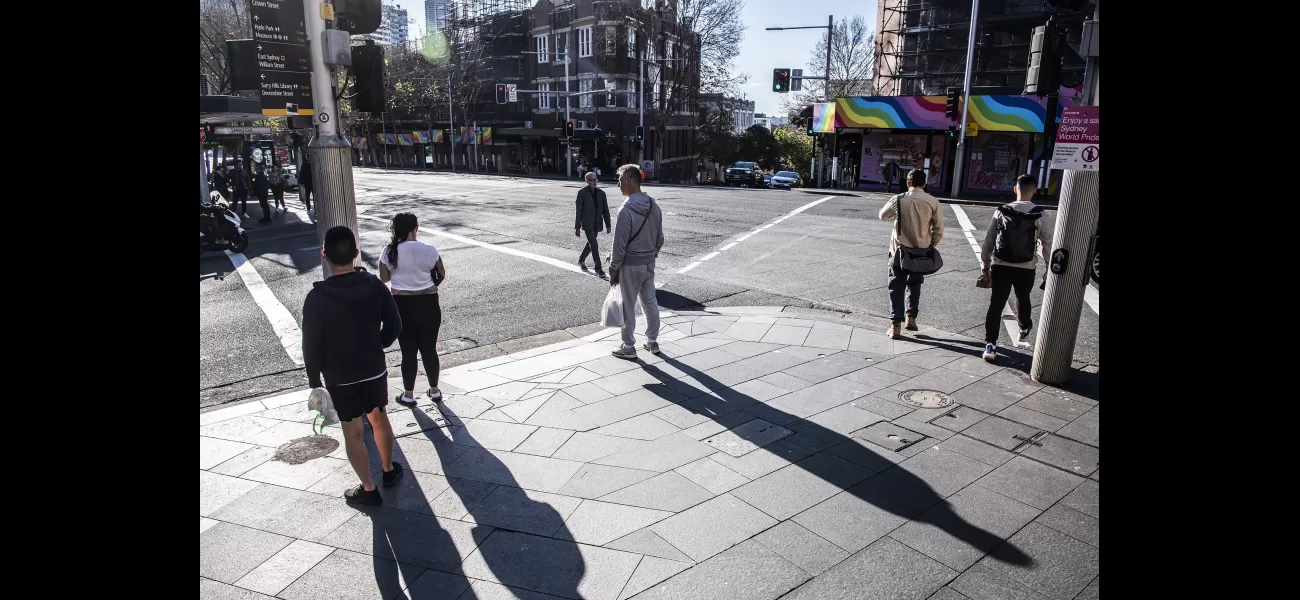Less Aussies having kids due to high living costs.
Fewer babies were born in 2023 than in any year since 2006, despite a spike in births in the years immediately following the pandemic.
July 24th 2024.

Australia is currently facing a unique situation - a baby recession. This is something that hasn't been seen in decades, and it's all because of the rising cost of living. According to a recent analysis by KPMG, the number of babies born in 2023 was the lowest it's been since 2006. This is quite a contrast from the post-pandemic baby boom we saw in 2021 and 2022.
The main reason behind this decline in births is the financial strain that households are facing. As inflation and interest rates continue to rise, families are finding it difficult to make ends meet. This has led to many Australians delaying or even deciding against starting a family. Terry Rawnsley, an urban economist at KPMG, explains that after the uncertain times brought on by the pandemic, some people who were holding off on having children finally decided to take the plunge. The record-low unemployment rate and the stimulus money injected into the economy also played a role in encouraging people to start families again.
However, with the current increase in living expenses, many Australians are choosing to put off starting or expanding their families. This, combined with the pandemic and rapid economic changes, has resulted in the sudden spike and subsequent sharp decline in birth rates over the past four years. Rawnsley points out that this decline is also part of a larger trend of decreasing fertility rates in Australia, which has dropped from over 2 children per woman in 2008 to just 1.6 in 2023.
In fact, the last time Australia saw such a low number of births was back in 2006. Interestingly, halfway through that year, the government attempted to stimulate population growth by increasing the baby bonus from $3000 to $4000. It was later increased to $5000 in 2008, but then reduced back to $3000 in 2013 and eventually scrapped altogether in 2014.
While it's been almost 20 years since the country has seen such a low number of births, Rawnsley notes that such a sharp decline from one year to the next hasn't been seen in about 50 years. He believes that birth rates can provide insight into long-term population growth, as well as the current confidence levels of Australian families. He also points out that the last time there was such a significant drop in births was during the economic stagflation of the 1970s when the contraceptive pill became widely adopted.
The decline in births has been most noticeable in major cities, particularly Sydney and Melbourne. In contrast, regional areas have seen a much smaller decline. According to Rawnsley, this is because the baby boom driven by younger Australians moving to regional areas has now slowed down. However, there is one capital city where births haven't dropped - Canberra. Rawnsley explains that this is because cost-of-living pressures in the city have been less severe compared to other major cities. Additionally, the economic outlook in Canberra has remained strong, meaning that families haven't been as financially strained as those in other cities. As a result, there has been a stabilization of births in the Australian Capital Territory.
The main reason behind this decline in births is the financial strain that households are facing. As inflation and interest rates continue to rise, families are finding it difficult to make ends meet. This has led to many Australians delaying or even deciding against starting a family. Terry Rawnsley, an urban economist at KPMG, explains that after the uncertain times brought on by the pandemic, some people who were holding off on having children finally decided to take the plunge. The record-low unemployment rate and the stimulus money injected into the economy also played a role in encouraging people to start families again.
However, with the current increase in living expenses, many Australians are choosing to put off starting or expanding their families. This, combined with the pandemic and rapid economic changes, has resulted in the sudden spike and subsequent sharp decline in birth rates over the past four years. Rawnsley points out that this decline is also part of a larger trend of decreasing fertility rates in Australia, which has dropped from over 2 children per woman in 2008 to just 1.6 in 2023.
In fact, the last time Australia saw such a low number of births was back in 2006. Interestingly, halfway through that year, the government attempted to stimulate population growth by increasing the baby bonus from $3000 to $4000. It was later increased to $5000 in 2008, but then reduced back to $3000 in 2013 and eventually scrapped altogether in 2014.
While it's been almost 20 years since the country has seen such a low number of births, Rawnsley notes that such a sharp decline from one year to the next hasn't been seen in about 50 years. He believes that birth rates can provide insight into long-term population growth, as well as the current confidence levels of Australian families. He also points out that the last time there was such a significant drop in births was during the economic stagflation of the 1970s when the contraceptive pill became widely adopted.
The decline in births has been most noticeable in major cities, particularly Sydney and Melbourne. In contrast, regional areas have seen a much smaller decline. According to Rawnsley, this is because the baby boom driven by younger Australians moving to regional areas has now slowed down. However, there is one capital city where births haven't dropped - Canberra. Rawnsley explains that this is because cost-of-living pressures in the city have been less severe compared to other major cities. Additionally, the economic outlook in Canberra has remained strong, meaning that families haven't been as financially strained as those in other cities. As a result, there has been a stabilization of births in the Australian Capital Territory.
[This article has been trending online recently and has been generated with AI. Your feed is customized.]
[Generative AI is experimental.]
0
0
Submit Comment





